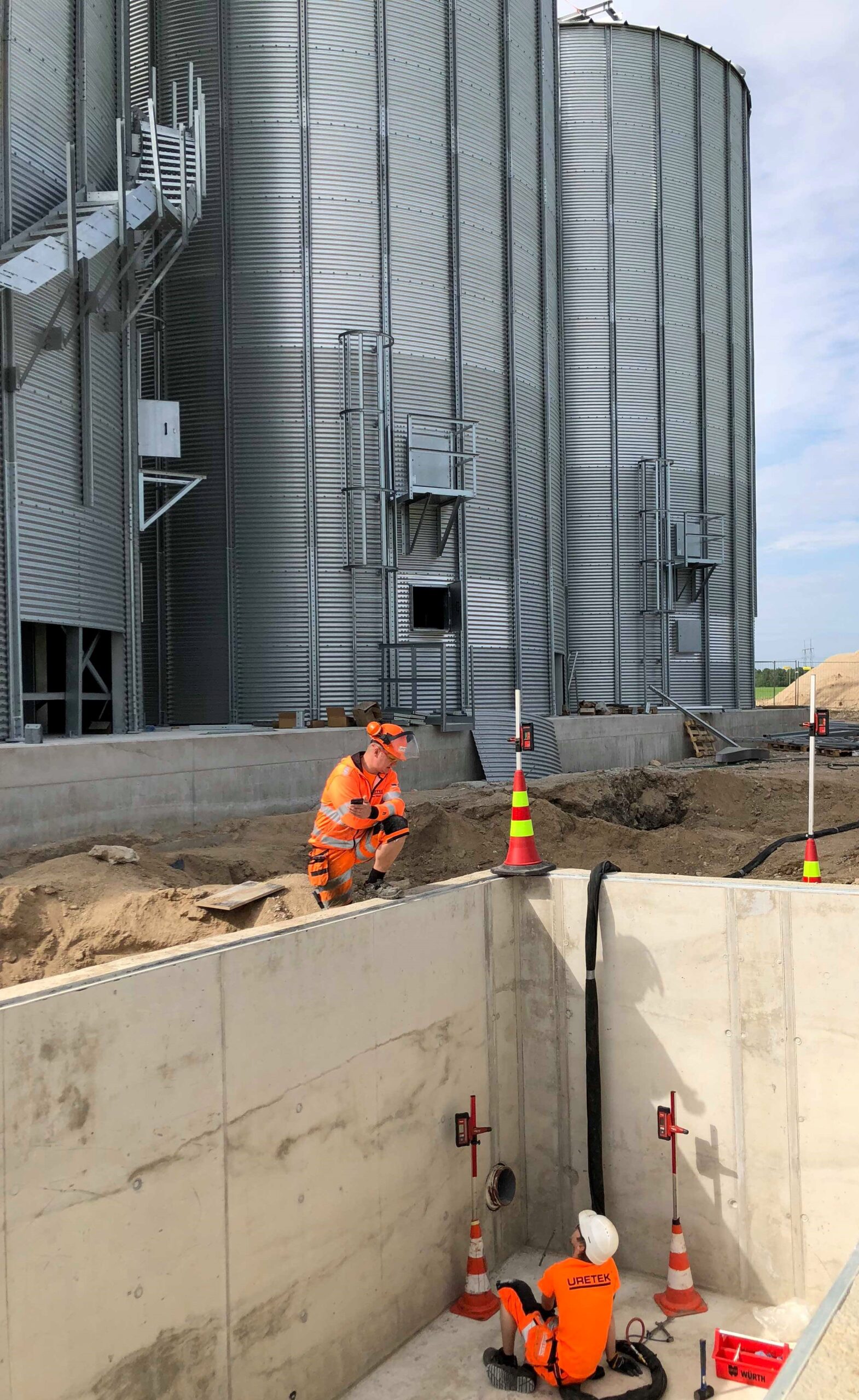Causes of deformation in building foundation
Formerly, foundation was repaired by cementing, now a new solution is used – URETEK technology. It represents a rapid and secure alternative to concreting and piling of foundation. URETEK technology deploys unique strengthening methods for foundation repairs, somewhat similar to advanced surgery. This technology allows eliminating the reasons for structural subsidence and deformation by re-levelling slab covering of concrete foundations, strip foundations, pile foundations and floor slabs and even solving problems related with access roads.
Work process
URETEK resin is inserted in the soil under a structure through small holes (usually with diameter of 16 mm, only 12 mm in case of interior works).
Then URETEK resins expand, filling cavities, compacting subsoil and stabilising the foundation (or other load-bearing structures), thus allowing re-levelling of the house.
For optimum results and safety purposes, the pressure generated in the course of expansion is constantly checked with laser equipment.
- Cracks in the walls usually shrink. However, in case of brick wall, it only requires secondary treatment of joints with mixture or joining with special fixture, patching and painting of cracks in case of plastered walls.
- Windows and doors will usually function normally again.
- Gaps between floor slats and fixed floors generally disappear as well.
Guarantee
Materials used comply with strict ecological and safety requirements and have been designed specifically to resist drying and subsidence. Quality is guaranteed for more than 50 years.
Strengthening methods using concrete works
Over many years, concrete works have been used as a classical method for foundation repairs. Compared to traditional concrete works, the advantages of URETEK technology include speed, cleanness, durability and predictability, economic efficiency and an opportunity to avoid interfering with normal use of the structure.
URETEK material ensures durable soil stabilisation and building re-levelling faster than concrete works, where nothing can be guaranteed. Now it is possible to heave a house to desired height within a day or two, or a couple of weeks, depending on its construction technology. Furthermore, resin injection does not generate waste, there is no need for excavation works, water, cement or concrete.
It is important to mention that injection works do not require vacating entire room. Unlike concrete works that need lots of preparation and interior works, URETEK technology does not need any of that. Small holes (diameter of 12–14 mm) can be drilled between cover plates and even through carpeting and there is usually no need for moving the furniture.
URETEK method is ideal for foundation repairs even in case of clay and other porous soils, as it solves subsidence problems. The method ensures load-bearing capacity of substrate and uniform properties of load-bearing layers.
In the course of concrete works, it is necessary to improve poor soil conditions, such as unbound, dusty and wet substrate or substrate containing poorly compacted filling material. This is due to the reason that extra weight of concrete may further aggravate the situation.
Cost of concrete works
Besides being more convenient, safer and durable, URETEK injection solution is usually also cheaper than traditional concrete base.
The cost of concrete works depends on many factors, including:
- Location of building,
- Actual cause of the problem,
- Properties and condition of the soil under a structure,
- Type and profile of building foundation,
- Surroundings, e.g. access to the plot, adjacent buildings and support walls,
- Unknown, unpredictable condition of the soil under a structure,
- Quantity of required material,
- Time spent on work.
If only one corner of the house requires re-levelling, concrete base may be cheaper, but it may still lead to further problems over time. For instance, new cracks may develop in the house if concreting is performed in only one section of the foundation, not to mention additional load on the base affecting the substrate that was used to former loads.
In most cases, resin injection is cheaper than other methods, including concreting of foundation.


